
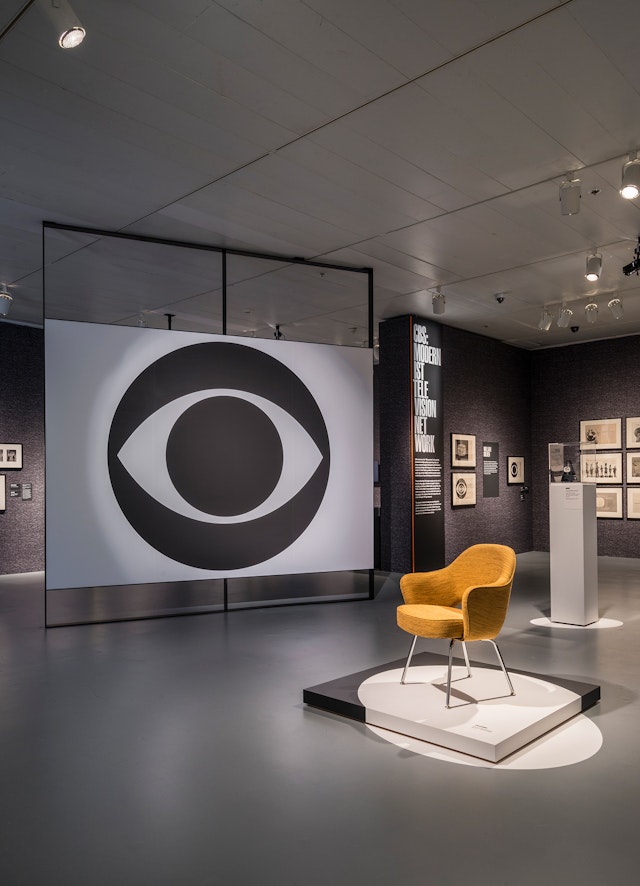

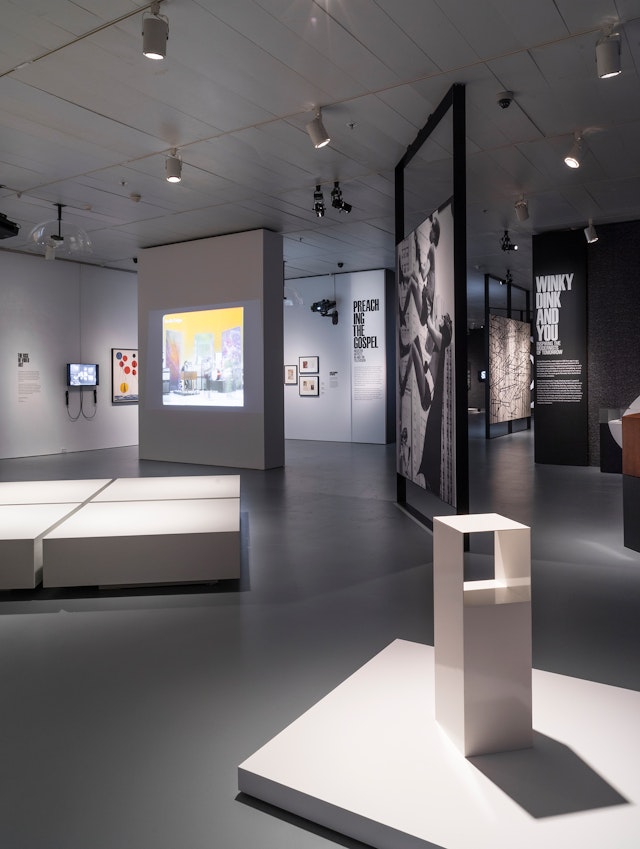

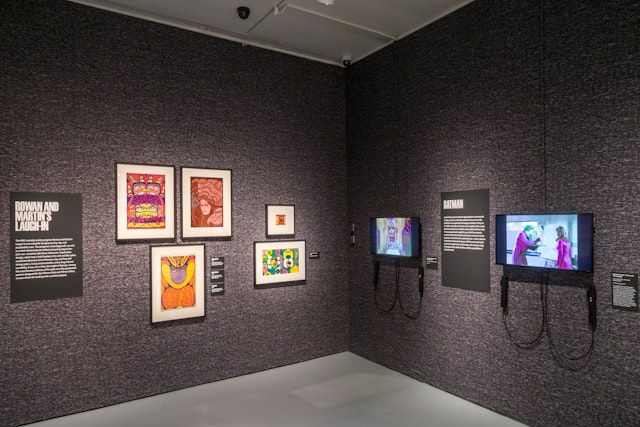
Large pools of light—really white graphic “spotlights” painted on the walls and floor—highlight individual works and bodies of text.



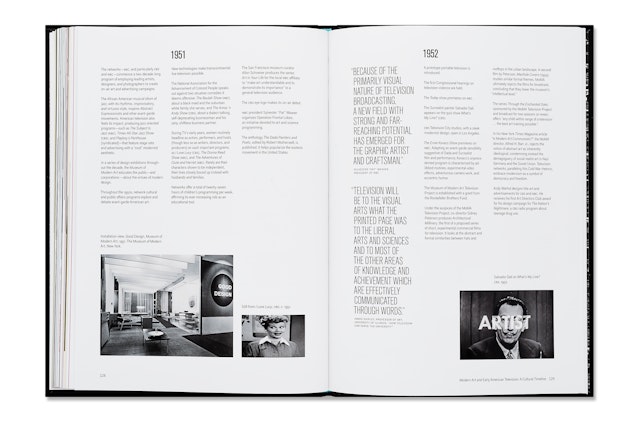


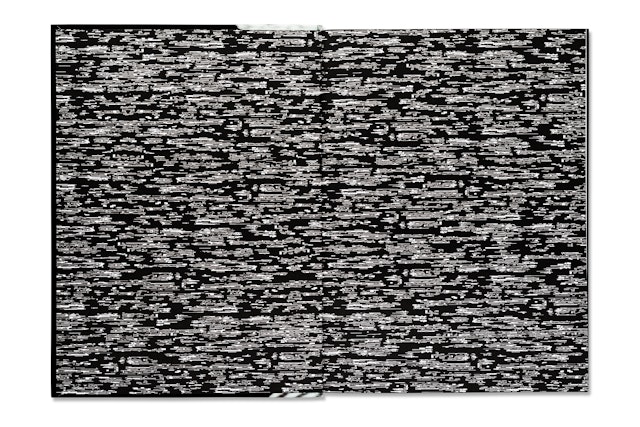
Award-winning dramas and groundbreaking comedies aside, television is seldom considered high art. But this hasn't always been the case. Revolution of the Eye: Modern Art and the Birth of American Television is an exhibition at the Jewish Museum that explores how avant-garde art influenced and shaped the look and content of network television in its formative years, from the late 1940s to the mid-1970s. Pentagram has created a striking design for the exhibition and its accompanying catalogue that highlights the connection between television and modern art movements like Abstract Expressionism, Pop Art and Minimalism.
Curated by Maurice Berger, Revolution of the Eye is a work of highly original scholarship and the first exhibition to consider its subject. Television’s inception in the late 1930s paralleled major innovations in art and design. The pioneers of American television adopted the aesthetics and concepts of modern art as a source of inspiration, and in return, early television introduced the public to the latest trends in art and design. Artists, intrigued with the medium and its technological possibilities, contributed to network programs and design campaigns, appeared on television to promote modern art, and explored the new medium in their work.
Pentagram collaborated with Berger to develop an exhibition that vividly brings this story to life. The 4,500-square-foot installation is divided into eight sections that cover a wide range of topics, including the influence of Surrealism on “The Twilight Zone”; the sophisticated corporate design of CBS, which embraced modernist principles; the role of Pop Art and psychedelia in creating the look of programs like “Batman” and “Rowan & Martin’s Laugh-In”; the unusual “Winky Dink and You,” television’s first interactive show (which taught children how to draw by having them trace directly on the screen); the Minimalist-inspired set designs of 1960s and 1970s variety shows; and how artists began to incorporate television and video in their own work. The exhibition features works by Saul Bass, Alexander Calder, Marcel Duchamp, Roy Lichtenstein, Man Ray, Eero Saarinen, Ben Shahn and Andy Warhol, as well as ephemera, television memorabilia, and clips from film and television.
The exhibition design evokes the darkened atmosphere of a television studio. Large pools of light—really white graphic “spotlights” painted on the walls and floor—highlight individual works and bodies of text. Graphics like the CBS eye appear on a series of large panels, with the reverse side used for projections of television clips, title sequences, early on-air graphics, animations and experimental films. The walls of the gallery have been covered with a custom pattern inspired by television static; the pattern is also used as endpapers in the catalogue.
Exhibition sections are introduced by strong, stacked typography inspired by a Saul Bass poster for “Edge of the City” seen in the exhibition. The type is set in Schmalfette Grotesk, a condensed sans-serif originally designed by Walter Haettenschweiler in 1954 and used by Willy Fleckhaus in his design of the 1960s German magazine Twen; Jeremy Mickel digitized the font for its current use.
The modular exhibition is designed to travel, and following its run in New York, will tour to Nova Southeastern University Museum of Art Fort Lauderdale; the Addison Gallery of American Art in Andover, MA; the Center for Art, Design, and Visual Culture at the University of Maryland, Baltimore County; and the Smart Museum of Art at the University of Chicago.
Pentagram also designed the catalogue, written by Berger, that accompanies the exhibition. The cover of the book features an image of Edie Sedgwick from a still of Andy Warhol’s Outer and Inner Space (1965), his first double-screen film, in which Sedgwick interacts with a television monitor that is playing a videotape of herself. To a greater degree than the exhibition, the book mixes the stark black-and-white of early television with the bright hues of Pop Art and psychedelia, carrying over the exhibition’s stacked typography in section openers that vibrate with color. The static pattern developed for the walls of the gallery is used for endpapers.
The book explores the dialogue between high art and television through a selection of more than 150 illustrations, juxtaposing graphic designs, ephemera, and stills from television programs with works by artists including Salvador Dali, Lee Friedlander, Agnes Martin, Man Ray, Andy Warhol, and many others. The volume wraps up with a cultural timeline of significant events in the development of television and modern art movements from 1934 to 1975, detailing the historical overlap and how artists interacted with the new medium.
